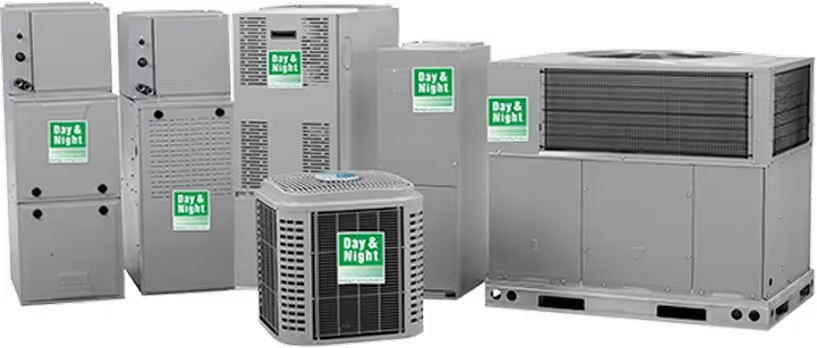
.jpg)
Why humidification matters for Atascadero homes
Atascadero’s Mediterranean climate brings warm, dry summers and cooler winters when forced-air heating or heat pumps can dry indoor air further. Low indoor relative humidity commonly causes:
- Dry skin, chapped lips, sore throats, and aggravated respiratory symptoms
- Static electricity and shrinking or cracking of wood floors, trim, and cabinetry
- Faster evaporation of indoor water sources and increased perceived chill at lower temperatures
Conversely, too much humidity increases condensation on windows, creates musty odors, and encourages mold growth in poorly ventilated spaces. The goal is controlled humidification that balances comfort and health without creating moisture problems.
Common humidification options and common issues in Atascadero
- Whole-house humidifiers integrated with the HVAC system (bypass, fan-powered, steam) — best for consistent, low-maintenance humidity control across the home
- Localized or room humidifiers (console or portable) — useful for bedrooms or problem rooms but require daily refilling and more frequent maintenance
- Combination strategies with ventilation and dehumidification for tight, modern homes that trap moisture
Common issues homeowners see locally:
- Low winter humidity causing discomfort and wood damage
- Over-humidification in bathrooms or near coastal microclimates leading to surface mold
- Poor distribution from improperly sized or installed whole-house systems
- Neglected maintenance leading to reduced output or bacterial growth in portable units
Humidifier types: comparison and when to choose each
Steam humidifiers
- Pros: Rapid output, accurate control, effective in tight or large homes, independent of furnace blower
- Cons: Higher energy use, require electrical and sometimes water treatment or condensate management
- Best for: Larger homes or situations where precise RH control is needed
Evaporative (pad-based) humidifiers
- Pros: Energy efficient, lower operating costs, simple mechanical design
- Cons: Pads require regular replacement, limited output for very dry homes
- Best for: Moderate whole-house needs where maintenance is acceptable
Bypass humidifiers (duct-mounted)
- Pros: Uses furnace airflow, quiet, lower energy draw
- Cons: Only effective when the HVAC fan is running; less output than steam or fan-powered units
- Best for: Homes with consistent furnace runtime and moderate humidification needs
Fan-powered humidifiers
- Pros: Provide output independent of furnace fan speed, better coverage than bypass models
- Cons: Slightly higher energy use, need duct space and proper mounting
Portable/local units
- Pros: Low upfront cost, targeted relief for single rooms
- Cons: Frequent refills, higher bacterial risk if not cleaned, noisy, do not protect wood or interior surfaces throughout the home
Installation and integration with existing HVAC systems
Professional installation ensures correct sizing, water and drain connections, electrical supply, and proper placement of the humidistat. Key considerations:
- Sizing: humidifier capacity should match home volume, air leakage rate, and local winter dryness. Undersized units run constantly and underperform; oversized units risk over-humidification if not controlled.
- Location: whole-house units are typically mounted on the furnace or in the return/ supply ducts. Humidistat placement matters — install in a commonly used living area away from direct airflow, doors, and windows.
- Plumbing and electrical: evaporative/bypass units usually need a cold water feed and a small drain; steam units require a dedicated electrical circuit and may need water treatment or a condensate drain.
- Controls: integrate humidistats with HVAC controls so the system can limit humidification when outdoor conditions risk condensation. Temperature-dependent controls that reduce humidification as outdoor temperatures drop are particularly useful for preventing window condensation on cold nights.
Recommended humidity setpoints and seasonal adjustments
- Winter (heating season): aim for 30 to 40% relative humidity. In Atascadero’s mild winters, 35 to 40% will often feel comfortable without creating window condensation. For very cold nights or older single-pane windows, keep closer to 30 to prevent moisture build-up.
- Transition months (spring/fall): 35 to 45% RH as outside humidity rises.
- Summer: typically avoid adding humidity. Indoor RH under 50% is preferred to limit mold risk and maintain comfort, especially when windows are closed and cooling or marine air moves inland.
Use a reliable hygrometer in living areas to verify conditions and adjust the humidistat as outdoor weather changes.
Maintenance tasks to keep performance and prevent problems
Regular maintenance preserves efficiency and prevents bacterial or mold growth:
- Evaporative pads: inspect annually and replace every heating season or sooner if mineral build-up occurs. Hard water increases replacement frequency.
- Steam humidifiers: descale per manufacturer recommendations (often annually or biannually) and consider using demineralized water or treatment cartridges if water quality is poor.
- Water lines and solenoids: check for leaks, clogs, or mineral accumulation at the start and end of the season.
- Humidistat calibration: verify readings with a separate hygrometer and recalibrate or replace if readings drift.
- Drains and overflow protection: ensure drains are clear and air gaps or backflow prevention are in place to meet code and avoid contamination.
- Portable units: clean tanks weekly and dry when not in use to prevent microbial growth.
Preventing over-humidification and mold
Over-humidification is common when systems are oversized, controls are misconfigured, or occupants rely solely on humidity setpoints without considering ventilation. To prevent problems:
- Use temperature-compensated or outdoor-sensor controls that reduce output when condensation risk rises
- Ensure adequate ventilation in bathrooms, kitchens, and laundry spaces; use exhaust fans during showers and cooking
- Avoid indoor sources of excess moisture: drying clothes indoors, excessive houseplants grouped in one room, or uncontrolled humidifiers in multiple rooms
- Monitor for early signs of high humidity: window condensation, musty odors, or new mold spots and address them immediately
Schedule Expert Service
Other Services

Featured Manufacturer
Discover the innovative solutions offered by our featured manufacturer, known for their commitment to quality and excellence.

Customer Testimonials
Our customers consistently praise our exceptional service and professionalism. We are committed to exceeding expectations and delivering outstanding results.









